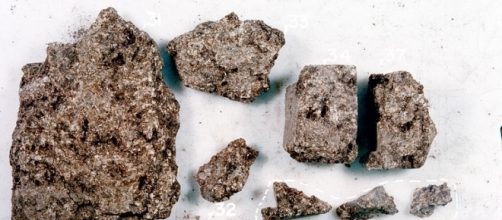The man has always been fascinated by the moon. The Apollo missions began in the 1960s, and at that time the general belief was that it was a dry planet. However, that concept changed after the Apollo 15 and 17 missions in 1971 and 1972 that brought back some rock samples. These samples revealed the presence of Water.
This realization came only in 2008 when the volcanic glass beads, brought back by the Apollo 17 mission, were analyzed and NASA announced in 2009 that there was water up there – the amount was insignificant. One ton of the moon's surface could yield hardly 32 ounces, but it was proof that water was available.
The finding will be a boon
CNN reports that in the opinion of scientists at Brown University, the water would be lying at a considerable depth. According to Ralph Milliken, lead author of the new research, the water is trapped in "glass beads" in ancient ash and rocks that volcanoes spewed across the surface of the moon. Since the bulk of the volcanic deposits bear telltale marks of water, it would be safe to presume that there is water in the interior of the Moon.
The volcanic refuse is spread over a vast area and covers thousands of square kilometers and may be several kilometers deep. In fact, the glass beads, similar to the ones brought back by Apollo 17, are present in nearly all the volcanic deposits spread across the moon and, if tapped, could provide a substantial amount of water that would help astronauts of future moon missions.
Future of Moon missions
NASA funded the study of the Moon's water deposits, and it is evident that water is widespread and not concentrated in tiny pockets. An obvious conclusion is that the Moon was able to hold on to water even after billions of years. Man is occupied with plans to go to Mars and has ignored the Moon since the Apollo 17 mission of 1972.
However, with water on the Moon, the scenario could change.
The presence of water on the Moon is an important find, and the Mars mission could consider using this as a base for training or testing equipment. In other words, a trip to the red planet Mars via the Moon is probably in the cards. It is not known how water came to be there on the Moon.
The fact is that it is there and it opens up a whole world of possibilities because water is a natural resource. Incidentally, NASA has already sent a man to the Moon and is keen to resume Moon missions and would have an advantage over others in its efforts to extract the water for use by astronauts.


